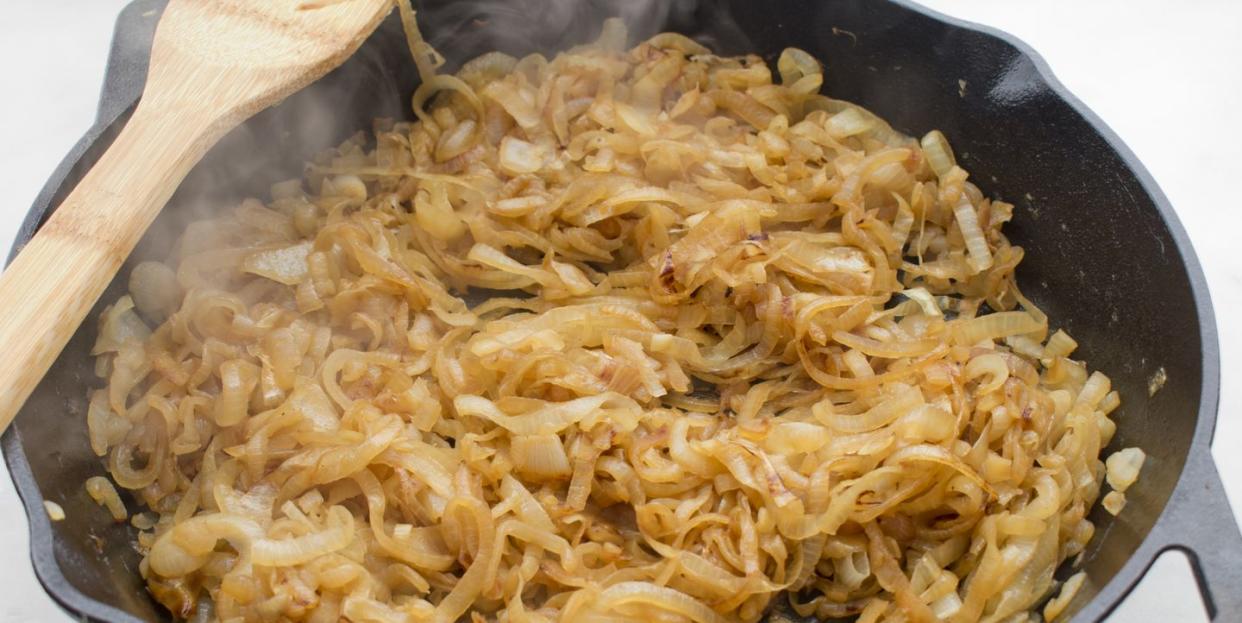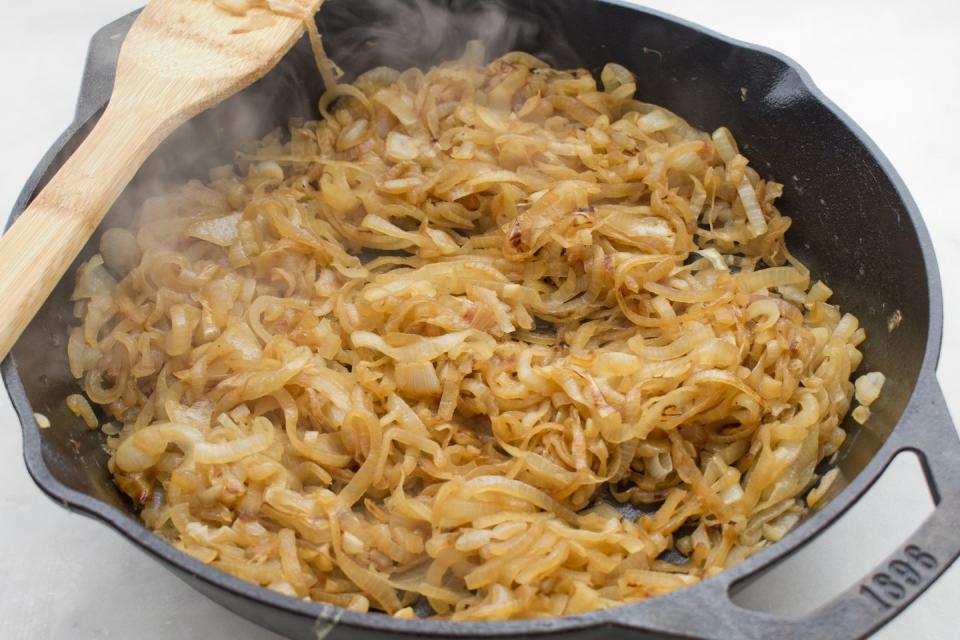How to Caramelize Onions So They're Sweet and Golden Brown

Ah, caramelized onions—they're practically magic, when you think about it: What began as a crisp, crunchy allium capable of reducing us to tears (here's how to cut onions without crying, in case you were wondering) is rendered over time into a sweet, umami-laden and nearly compote-like batch of irresistibility. They're an ideal topping for burgers and pizza, add serious oomph to simple pasta dinners and can be added to just about anything savory from sauces to breads. Ree Drummond's also cornered the market on French onion soup—essentially a liquid ode to caramelized onions—and created dedicated riffs that capitalize on its greatness ranging from a French onion chicken casserole to French onion stuffed mushrooms.
To be honest, the only downside to caramelized onions are that they cook down in volume to a fraction of what you started with and willpower is needed to curb the impulse to eat them all in one sitting using a spoon. So without further adieu, here's how to caramelize onions!

Step 1: Choose your onions.
Feel free to use whatever you have on hand—yellow, white, sweet or even red. All types of onions have sugar, which is what facilitates the caramelization. In general, five large onions will cook down to roughly 2 cups caramelized onions.
Step 2: Prep your onions.
Halve the onion through the root and peel and discard the onion skin. Lay the onion flat on its cut-end, then thinly slice perpendicular to the root end to form half-moons. These will cook into silky strands, but you can dice onions as well. Any preparation will work—just keep in mind that the thickness of the onion will ultimately affect cooking time.
Step 3: Heat fat in a skillet.
You can use butter, olive oil, a combination of both or even rendered bacon fat. Neutral cooking oils like canola or vegetable oil can also be used, but they won’t add nuanced flavor the way butter and olive oil will. Butter adds its own unique flavor, but it has a low smoking point (meaning it will begin to break down and burn at higher cooking temps), which makes it ideal for combining with olive oil.
No matter what you use, start the heat on medium to heat the fat, and adjust as needed to prevent burning and to properly facilitate the caramelization process.
Step 4: Caramelize the onions.
Once your fat element has been added to the pan and heated through, add the onions! Season with salt and cook, stirring to coat in the fat, then let time and medium-low heat work in tandem to produce the purpose of this story: caramelized onions! For best—or rather, traditional—results, take your sweet time slow-cooking the sliced onion, stirring occasionally, over medium to low heat. Some recipes will call for 20 minutes of cooking time and yet others will call for upwards of an hour—Ree calls her French onion potato soup a "bowl of heaven" and she gets the job done in under 15 minutes! Find your own way to the sweet and silky golden strands, even if the literal cooking time changes with each batch; your only goal is to get there slowly, giving the natural sugars found in onions time to properly cook and caramelize.
Step 5: Deglaze the pan (optional).
If the onions begin to burn or stick to the bottom of the pan, deglaze the pan by adding a splash of liquid.
Step 6: Store leftover caramelized onions (also optional).
If there are any leftovers, store in an airtight container and refrigerate for up to 4 days.
You Might Also Like

